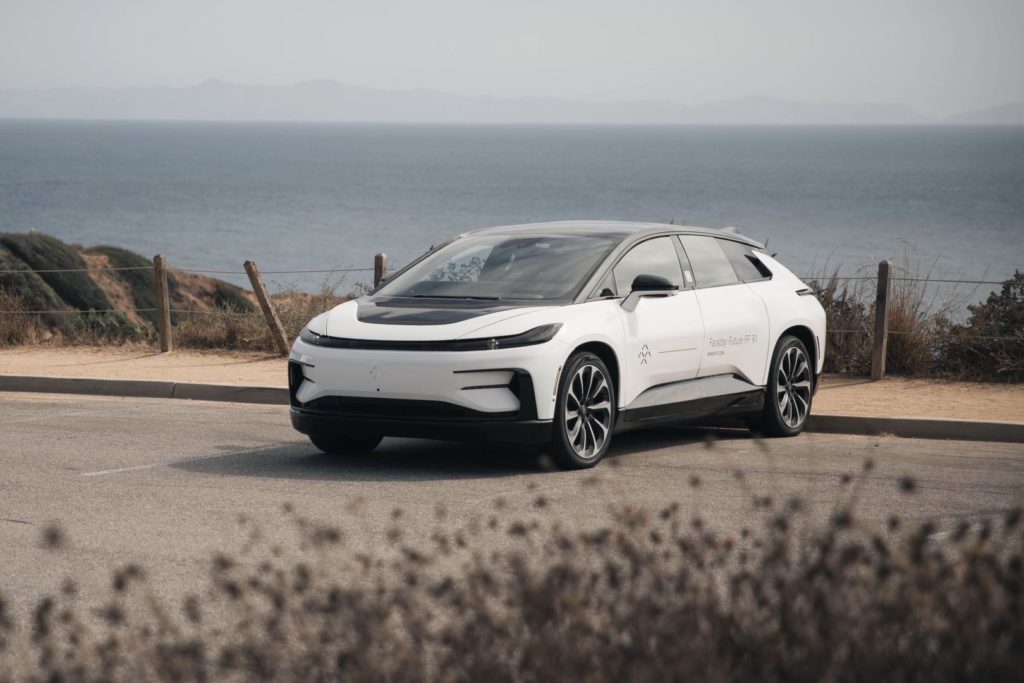Faraday Future, which once hyped itself as a “Tesla killer,” is now listed on the Nasdaq alongside Elon Musk’s electric vehicle company. Its shares began trading in New York on Thursday following a SPAC deal. The price slid from USD 16.84 apiece to USD 13.05 over the course of an hour, then stayed relatively flat for the rest of the day.
In all, USD 1 billion was dropped into Faraday Future’s war chest. The company is now valued at USD 3.4 billion. Think of this as a second life for the battered company.
Faraday Future was founded by controversial billionaire Jia Yueting in 2014 and showcased a concept car at the 2016 Consumer Electronics Show in Las Vegas. Even though the car was little more than a hull, Faraday Future’s keynote left an indelible impression when SVP Nick Sampson said the company would revolutionize mobility, just like Apple did to mobile phones with its iPhone.
That chutzpah mirrors Jia’s general attitude and outlook. In 2015, as founder and CEO of LeTV, a video streaming site now known as Le.com, Jia likened Apple to Nazis by posting an image showing Hitler wearing a red armband with the swastika replaced with Apple’s logo. In an ironic twist, Faraday Future was initially mistakenly viewed as a secret autonomous driving R&D unit set up by Apple.
Faraday Future has taken multiple embarrassing turns. When the company attempted to run a demo at the 2017 edition of CES, its car failed to move as intended, and a staff member had to sneak into the driver’s seat to steer the vehicle forward. The company’s international staff—including personnel poached from Tesla, Apple, and major, conventional automakers—clashed with management in China. One former executive of Faraday Future told The Verge colorfully in 2016, “If you’re an investor, you’re f-ed.”

But that was years ago. Since then, the company has undergone fundamental changes, chiefly due to the massive debts incurred by its founder.
Jia put up USD 900 million of his own money so Faraday Future’s headcount could balloon. This cash mainly came from loans in China that he never repaid. Jia relocated to California to pour his time into the operations of Faraday Future—or to live in exile due to his massive debts. In 2017, the Chinese government added him to a state-compiled list of defaulters.
Two years later, Jia filed for bankruptcy. His stake in Faraday Future went to his debtors. That means when the company made its debut on the Nasdaq, he owned no shares.
Evergrande, a real estate conglomerate that now has its own EV arm—and is also the world’s most indebted developer—invested USD 800 million into Faraday Future in early 2018, with a clause to disburse an additional USD 1.2 billion over two years if certain undisclosed goals are met, in exchange for a 45% stake.
Faraday Future suffered annual net losses to the tune of USD 142 million and USD 147 million in its two most recent fiscal years. As of March 31, it had USD 47.5 million cash on hand. So far, it has had no mass production capabilities for its cars, including the much-hyped FF 91 electric SUV that couldn’t perform on stage at CES.
To this day, there is speculation about whether Jia will return to China and what fate might befall him. He was asked about this in New York on Thursday, and, if you take him at his word, Jia sees his homecoming as “necessary.”
Read this: Here’s everything you’ll find in your fully autonomous vehicular future

